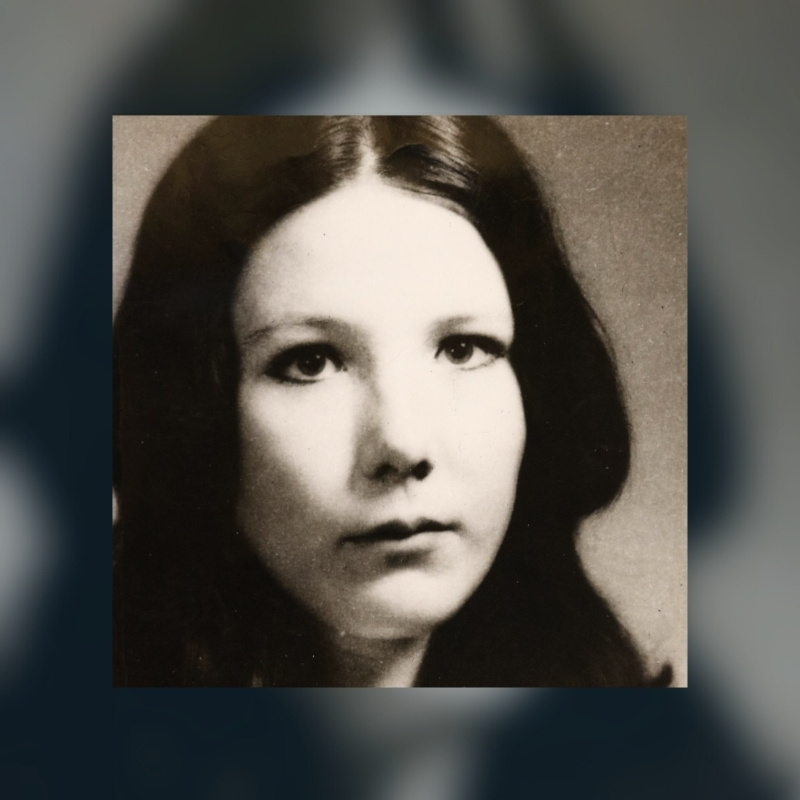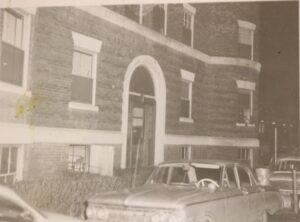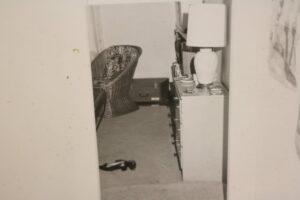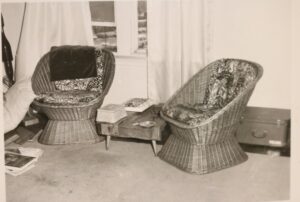It was the morning of January 7, 1969 and 23-year old Harvard University graduate student Jane Britton should have been in class to take her exam. A dedicated and standout student of anthropology, Jane wouldn’t have missed a test unnecessarily. Her boyfriend took note of her absence, and as soon as class was over, went to find Jane at her apartment in Cambridge.
Jane was later discovered by her boyfriend and neighbors dead in her bed, the victim of a violent attack. Police chased down what little information they had. Some evidence leaked to the media spiraled into sensational headlines of rumored ancient burial rituals with suspicion cast on Jane’s own anthropology classmates, while other clues at the crime scene led some officials to theorize that the attack was random and opportunistic.
Investigators would come up empty handed in the case for decades until finally DNA evidence closed the unsolved mystery of the murdered Harvard Student.
About Jane Britton
Those who knew her described Jane as talented with a zest for life. She loved to paint and cook, she appreciated fine literature and classical music – especially Bach – and she played the organ. She earned her undergraduate degree at Radcliffe College, where her father J. Boyd Britton was vice president, and was an enormously confident student in her graduate studies in Anthropology at Harvard University. Her primary interest was the Neolithic period from 5000-6000 B.C. when the earliest villages were forming and animals were domesticated for use in agriculture.
In the New York Times, writer Robert Reinhold summarizes Jane Sanders Britton as, “a bright, sophisticated and purposeful student,” and, “the well-adjusted product of a liberal, educated family and of private schools – a young woman who displayed an earthy character that made her at ease with pop culture…armed with a sardonic wit often tempered with literary allusions.”
Her friends said she wasn’t into partying or the drug scene at school, but she did go to parties, and was friendly and kind to all characters passing through, even the quote-unquote “non-Harvard and Radcliffe” types, as the New York Times states.
In 1969, Jane lived in an apartment on the fourth floor in apartment at 6 University Road in Cambridge. The building was owned by Harvard University and the units, though not technically dorms, were largely occupied by students and faculty given its proximity to campus.
A Record American article reports that Jane’s apartment door was painted with gold leaf and adorned with a sign with a quote. It said, “‘Maybe,’ said Mrs. Kylie, ‘She’s an archeologist because she didn’t have a sandbox when she was little.’ September 1968.” Jane lived alone in unit 8A, except for her cat and a pet turtle.
The Night of January 6, 1969
January 6, 1969 was a classic New England winter evening for Jane Britton and her beau James Humphries. They went out to dinner on a double date with some friends and then went ice skating on the Cambridge Common. It was a Monday evening – a school night for the two Harvard University graduate students – so Jane and James returned to her apartment by 10:30 p.m. They talked about the exam they had the next morning and relaxed with some hot cocoa before James left for the night. It was 11:30 p.m. when he said goodbye.
Before turning in for the night though, Jane popped her head into the next door apartment of her friends, the Mitchells. The police report doesn’t give context, but it says that Jane went to get her cat – maybe they watched the cat when she was away for long stretches of time or maybe the cat just wandered the hall and ended up at their place – but regardless of why, Jane went to the Mitchells to find her cat and while there, she chatted with her neighbors about the next morning’s exam over a glass of sherry. She left about 12:30 a.m. and went back to her apartment next door. She got ready for bed, put on her blue nightgown, and turned out the light.
On the morning of January 7, 1969, Jane should’ve been out the door and heading to her exam, the one she’d talked about with her boyfriend and her neighbors just hours before. But Jane didn’t show up. Her boyfriend James was confused by her absence. It wouldn’t have been like Jane, a dedicated student, to miss an exam without any sort of explanation.
According to the original police report, James Humphries tried calling Jane at her apartment that morning, but she didn’t answer, so he decided to stop by her apartment just to check in. He arrived at 6 University Road around 12:20 p.m. and knocked on Jane’s door several times, but again she didn’t answer. James checked the door knob, and realized it was unlocked, so he stepped inside.
James found Jane lying in bed, the lower half of her body nude and exposed with her head and torso covered with blankets and sheets. Her head was draped with a fur coat. Something looked off about it, the way she was laying there. Apparently James didn’t approach his girlfriend or try to rouse her. Instead, he went to find Jane’s neighbors, Donald Mitchell and his wife, who lived down the hall and were friends of Jane’s.
James asked Mrs. Mitchell to take a look at Jane because he thought she might be ill. Two police reports are conflicting here, but either Mrs. Mitchell or her husband was the one to reach for the fur coat covering Jane’s head, lowering it just enough to see that she was face down and covered in blood. They draped the fur coat over Jane’s legs, and left the apartment in a hurry to call police.
Initial Investigation
At 12:40 p.m. Lieutenant Leo Davenport of the Cambridge Police Department responded to 6 University Place along with an Officer Lyons. In muddled cursive handwriting, Lt. Davenport detailed what he saw and did at the scene in a written statement.
He stated that met James as well as Donald and his wife who led the officers into Jane’s apartment. There he observed Jane in her bed, legs touching the floor, the fur coat where Donald had placed it when he found her there. Jane was very obviously the victim of something violent. Davenport notified his sergeant back at the station, requesting detectives at the scene.
Patrolman Beni Cappello assisted in the early investigation, questioning Mr. and Mrs. Mitchell about their neighbor. They told the officer that the last time they saw Jane Britton was just about 12 hours earlier, around 12:30 a.m. when she left their apartment after a quick drink and conversation. Officer Cappello asked the Mitchells if they’d heard anything that night after she left, any noise or voices or a disturbance, but they hadn’t heard a thing.
Jane Britton’s body was removed and transported to the Watson Funeral Home to await an autopsy and toxicology testing. Associate Medical Examiner Arthur McGovern and forensic pathologist George Katsas issued the autopsy report, finding that Jane died as the result of multiple blunt injuries of the head with fractures of the skulls and contusions and lacerations of the brain. If Jane Britton had been sexually assaulted, that information was not released with the autopsy report. Neither her body nor the scene showed no signs of struggle, leading investigators to believe that she was attacked while asleep.
The toxicology screen revealed that Jane’s blood alcohol was negative but her stomach alcohol content was 0.08%, meaning that the drink she had with her next door neighbors had not yet metabolized and hit her blood stream. This gave a better timeline for the murder – It seemed Jane was killed just shortly after she returned to her apartment.
Jane Britton’s story continues on Dark Downeast. Press play to hear how the investigation finally led to a suspect after more than 50 years.
Episode Source Material
- DNA Used to Identify Man Responsible for 1969 Murder of Jane Britton, Middlesex County District Attorney’s Office
- Press Statement, Middlesex District Attorney
- Statement from Boyd Britton
- Girl’s body found in Cambridge, Boston Globe, 07 Jan 1969
- Everybody liked Slain girl, Harvard anthropologist says by Alan Sheehan, Boston Globe, 08 Jan 1969,
- Cambridge dragnet seeks girl-killer by Jerome Sullivan, Boston Globe, 08 Jan 1969, page 2, includes picture of building
- Tenants complain of poor security by Gerard Weidmann, Boston Globe, 08 Jan 1969
- Hunt for weapon in girl’s slaying, Transcript-Telegram, 08 Jan 1969, page 2
- Harvard girl brutally slain in apartment by James Stack, Boston Globe, 08 Jan 1969, page 2
- Obituary for Jane S. BRITTON
- Building ‘looks like slum’; still no lock on front door by Jeremiah V. Murphy, Boston Globe, 09 Jan 1969
- Boyfriend seen out in coed’s slaying; death linked to ancient funeral rites, The Berkshire Eagle, 09 Jan 1969
- Police examine ochre found near slaying victim by James Stack, Boston Globe, 10 Jan 1969
- Harvard to probe no locks on doors by Jeremiah V. Murphy, Boston Globe, 10 Jan 1969
- Police seek ‘break’ in murder; rites held for girl in Needham by Jerome Sullivan, Boston Globe, 10 Jan 1969, page 2
- Murder probe hits blank wall, Athol Daily News, 11 Jan 1969
- Slain Harvard student buried — Police film all at service by James Stack, Boston Globe, 11 Jan 1969
- Police sift 100 names in slain girl’s diary by James Stack and George L. Croft, Boston Globe, 12 Jan 1969
- Harvard defends housing by Parker Donham, Boston Globe, 12 Jan 1969
- Police search for motive in Britton murder, Boston Globe, 13 Jan 1969
- Medical report may reveal slaying motive, Boston Globe, 14 Jan 1969
- It table key to Britton murder? by James Stack, Boston Globe, 16 Jan 1969
- Still no clue to Britton slaying by Jerome Sullivan, Boston Globe, 21 Jan 1969
- Grand jury to hear Britton case, Boston Globe, 29 Jan 1969
- Middlesex grand jury hears Britton evidence, Boston Globe, 03 Feb 1969
- Widow 2nd Cambridge victim of bludgeoning in month by Jeremiah V. Murphy, Boston Globe, 07 Feb 1969, page 2
- Hub police checks leads in slaying, Athol Daily News, 13 Feb 1969
- 6 fires hit site where widow slain, Boston Globe, 14 Feb 1969
- Similarities seen in 2 Cambridge murder cases by Richard A. Powers, Boston Globe, 06 Apr 1969, page 2
- Britton murder Grand Jury to stay in session, Boston Globe, 27 May 1969
- Obituary for Ruth BRITTON
- Half-century later, murder evidence still under wraps by Todd Wallack, The Boston Globe, 18 June 2017
- Why is DA Ryan stonewalling on cold case? by Michael Widmer, Boston Globe, 05 Jan 2018
- DNA tests yield clues in unsolved ’69 killing by Todd Wallack, Boston Globe, 20 Nov 2018, page 2
- Killer identified in 1969 murder of Harvard student in Cambridge by Todd Wallack, Boston Globe, 21 Nov 2018
- Middlesex DA creates cold case unit to probe crimes over last 50 years by John R. Ellement, Boston Globe, 27 Mar 2019
- Archaeological Unit From Harvard Unearths Lost Fortress in Persia, The Crimson, 12 Nov 1968
- Ochre: The world’s first red paint by Laura Geggel, 20 Nov 2018





